Under The Sea: Explore 7 Stunning Underwater Cities and Towns In The World
Though there are few aquatic ruins that could match the likes of Alexandria — the ancient Egyptian city so damaged by earthquakes that much of its harbor ended up beneath the sea — there are other places across the globe where you can find underwater cities, towns, and villages.
The majority of them were flooded as a result of the construction of reservoirs or waterways.
Here is 7 stunning underwater cities and towns that is worth a visit of a lifetime.
1. Shicheng, China
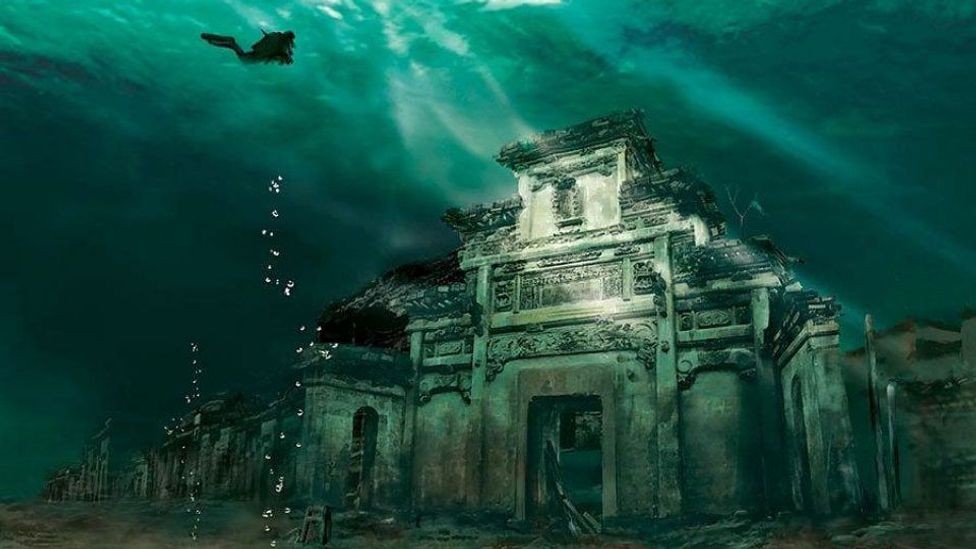 |
| Photo: BBC |
Shi Cheng, Chun’an County, Zhejiang, China. An ancient city, established about 1300 years ago, now lies at the 26-40 m depth underwater. The city and the valley were deliberately flooded in 1959 in order to create an artificial lake and hydroelectric power station. Now it could be a unique paradise for divers.
Surprisingly the city hasn’t eroded much and the buildings, walls, even wooden details remained. Currently a film crew is commissioned to record the ancient city. The archeologists are overwhelmed by how well preserved Shi Cheng is. However, there are no tourist facilities for diving, but hopefully in the future the site will be open for everyone to view.
The water temperature averages between 50 and 68 degrees Fahrenheit and thus the underwater city remains in remarkable condition. You can see its gateway and buildings carved with various mythological creatures. The weather is always acceptable but the very best time to visit this Qing dynasty city is in the fall when it is sunny, dry, and colorful.
2. Kalyazin, Russia
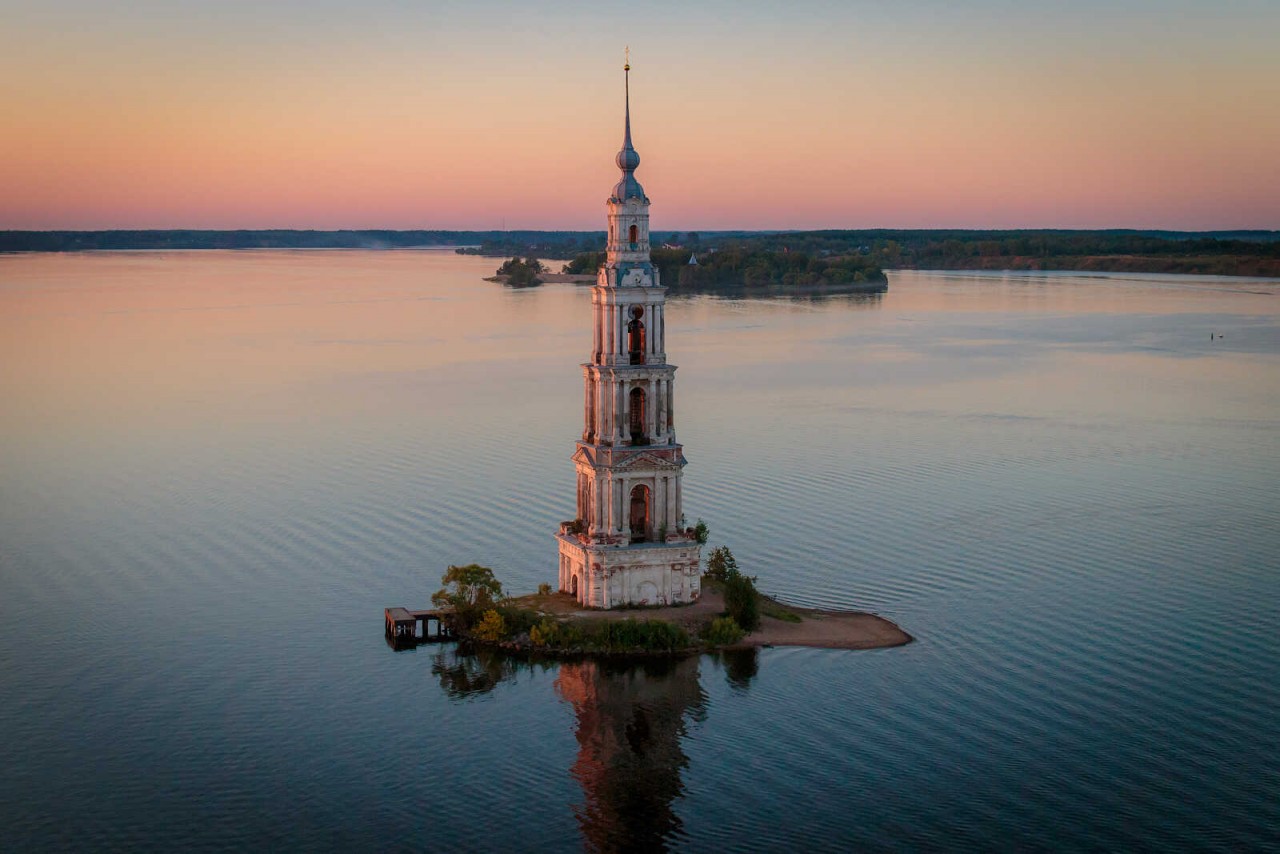 |
| Photo: Dronestagram |
The trading town of Kalyazin was settled on the high bank of the Volga. The small river of Zhabnya, flowing into the Volga, separated the town into two parts. The Monastery of St. Nicholas was located on the one bank of Zhabnya, the Trinity Kalyazin Monastery on the other one. In the 18th century, the population of that area grew thanks to blacksmithing, shoemaking, and pottery. Kalyazin also was famous for its lace which was sold in Moscow and St. Petersburg. Trade traffic was growing, and Catherine the Great gave Kalyazin city status in 1775.
In 1917, the epoch of the Soviet Union started in Russia under the slogan “We will build a new world.” Of course, the “old world” was supposed to be destroyed. Communists rejected religion, and for starters, banned church bell ringing.
In the 1920s, an ambitious project was developed: a few hydropower plants on the river Volga. Accordingly, several cities and hundreds of villages located on its banks were to be flooded. Mologa, Korcheva, Vesjegonsk are just some of the flooded cities. Kalyazin also went under the water of the Uglich Reservoir together with its cathedral, churches, houses, and streets.
The upper parts of the Nikolsky Cathedral and its bell tower remained above the level of water. The cathedral was demolished, but the tower stands to this day. Probably it was supposed to be a nautical marker, because the Volga makes the sharp turn to the left to Uglich. There, from the ship, we saw the Kalyazin Bell Tower for the first time.
3. Sant Romà de Sau, Spain
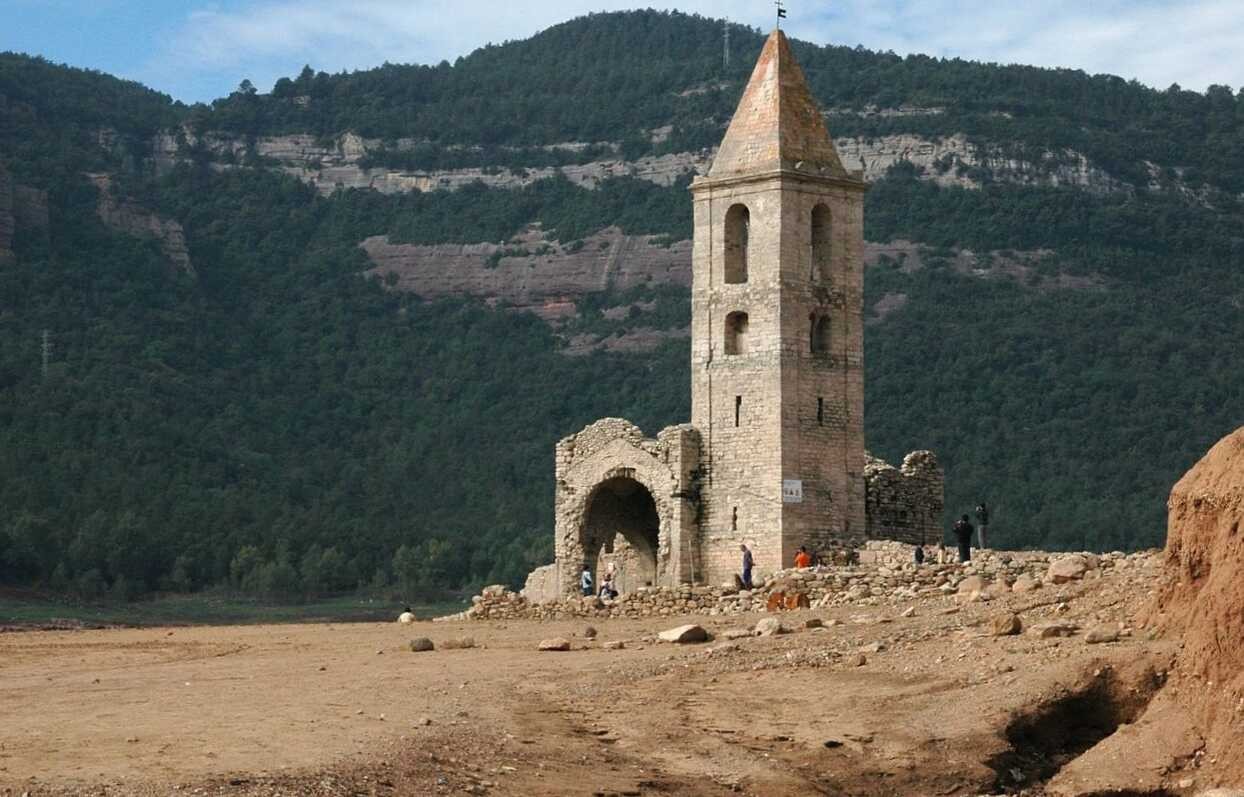 |
| Photo: Wikipedia |
SOMETIMES OLD RUINS JUST GET in the way of modern progress. When that happens, there is apparently no other choice than to flood a 1,000-year-old city with breathtaking Romanesque ruins. Despite the deluge, after 50 years, the proud spire of the village’s church won’t go away so easily.
In the 1960s, the Catalonian government made the choice to create a reservoir on the site of San Romà de Sau, a village that had been inhabited for a millennium. Forced to leave their town, the people made their best effort to take their valuables, and even exhume their dead before the man-made flood. Leaving the skeleton of their town, they headed inland.
As predicted, the creation of the reservoir flooded San Romà de Sau and completely submerged the buildings. However, when water levels in the area drop, the ghost village eerily emerges from the water, highlighted by the three-story church of the town.
Although very small, the pointed spire of the church can still be seen from anywhere in the surrounding hills. When the reservoir is high, only the tip of the Romanesque spire can be seen, but during periods of drought, the entire church emerges on dry land. During one of the dry periods, an effort to fortify the remains took place, and the church was reinforced with concrete. Despite being reinforced, the church is off-limits to visitors, and has a fence surrounding it that sinks with the water level as well.
4. Mediano, Spain
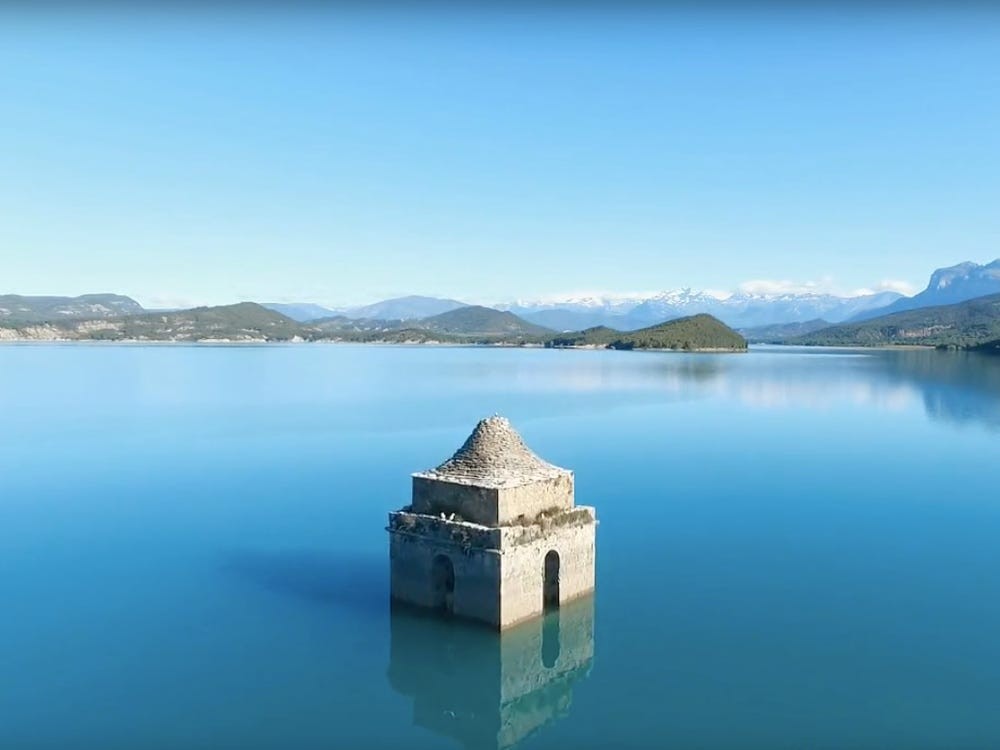 |
| Photo: Insider |
The underwater village of Mediano can be found in Huesca, Spain. In 1969 the village was intentionally flooded in order to build a reservoir. The news media did not report it when it happened but the reservoir was opened with warning the locals.
When the area began to flood, the residents had to flee their homes taking little more than only what they could carry. All but one building disappeared as the water level rose. The bell tower of Mediano’s church–which dates back to the 1600s– remained above the maximum water level. If you visit today you will be able to see a few of the buildings rising slightly above the water’s surface.
5. Port Royal, Jamaica
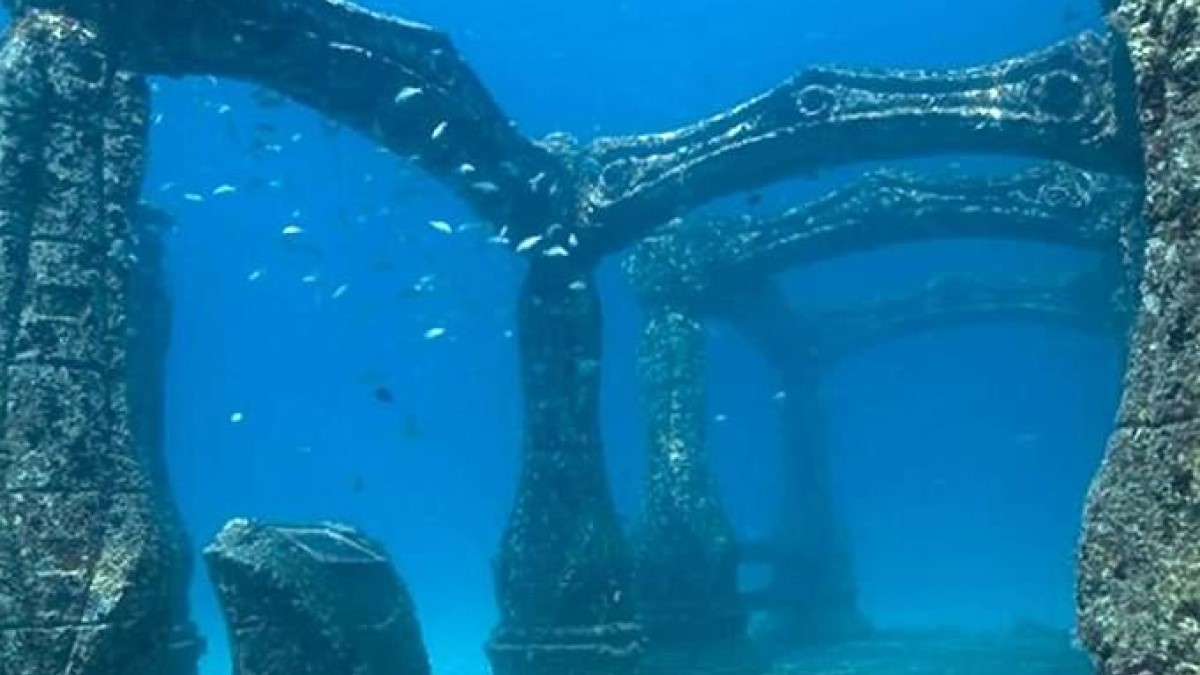 |
| Photo: Gazettely |
“THE EARTH OPENED AND SWALLOWED many people, before my face, and the sea I saw came mounting in over the wall, upon which I concluded it impossible to escape.”
Edmund Heath, survivor and eyewitness to the devastating 1692 earthquake wrote these words in a letter from the safety of a ship moored in the city’s harbor, overlooking the ruins of his city. Port Royal, once called “the most wicked and sinful city in the world” was famous the world over for its booze—the blackout-inducing Kill Devil Rum, its pirates, and its sex workers. Needless to say, when the city was nearly destroyed, there were some parties that saw it as a convenient solution to an ugly problem.
Located on the southeast coast of Jamaica, the natural harbor at Port Royal became the center of English life in Jamaica. By the late 1600s it had become one of the largest European cities in the new world, second only to Boston. It had also become the infamous home of pirates, sex workers, and Englishmen on the make. Far from home, they made their livings off of the slave trade, slave labor in plantations, and the money that the pirates brought in from their looting forays against the Spanish.
It may be seen as an indicator of the caliber of vice in Port Royal that in 1675 the notorious pirate Henry Morgan became the Lieutenant Governor. In fact, Morgan began to crack down on overt piracy as the grand era of privateering he had been part of began to enter its waning phase. He died just four years before the earthquake struck and was buried in the Palisadoes cemetery.
On the morning of June 7, 1692, a massive earthquake estimated at a 7.5 magnitude hit the island. The city, largely built over sand, suffered instantly from liquifaction, with buildings, roads, and citizens sucked into the ground. Geysers erupted from the earth, buildings collapsed, and finally the city was hit by tsunami waves, dragging what had not been destroyed out to sea. In the end, some 33 acres of the city disappeared under water, four of the five forts were destroyed or submerged, and 2000 people were killed. The cemetery where Captain Morgan was buried slipped into the sea, its bodies floating up to mix with the freshly dead.
Today most of the remains of the 17th century city lie under up to 40 feet of water. Up until the 1900s visitors reported on the city still visible below the waves and the eerie sensation of floating over the rooftops. Since the 1950s, divers have been exploring and cataloging the submerged city. In 1969, Edwin Link discovered the most famous artifact: a pocket watch dated 1686, stopped at exactly 11:43.
6. The Lost Villages of Ontario, Canada
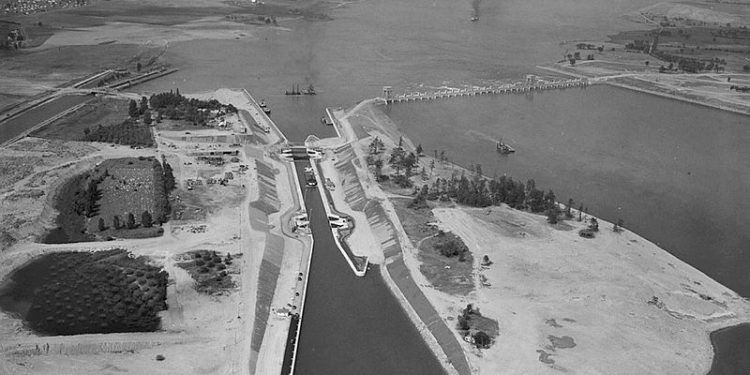 |
| Photo: The Hills of Time |
The "Lost Villages" encompass a total of 10 Canadian towns.
All of these towns were former municipalities of Cornwall and Osnabruck in Ontario.
Both of these regions were submerged following the construction of a waterway in 1958.
To this day, there are still sidewalks and buildings that are visible from some areas above the surface of the water.
A museum dedicated to submerged villages was built to keep alive the memory alive.
One of the exhibits in the museum features some buildings that were removed from the villages before they were submerged, which have been restored in a similar way to the way they would have stood before the floods.
7. Pavlopetri, Greece
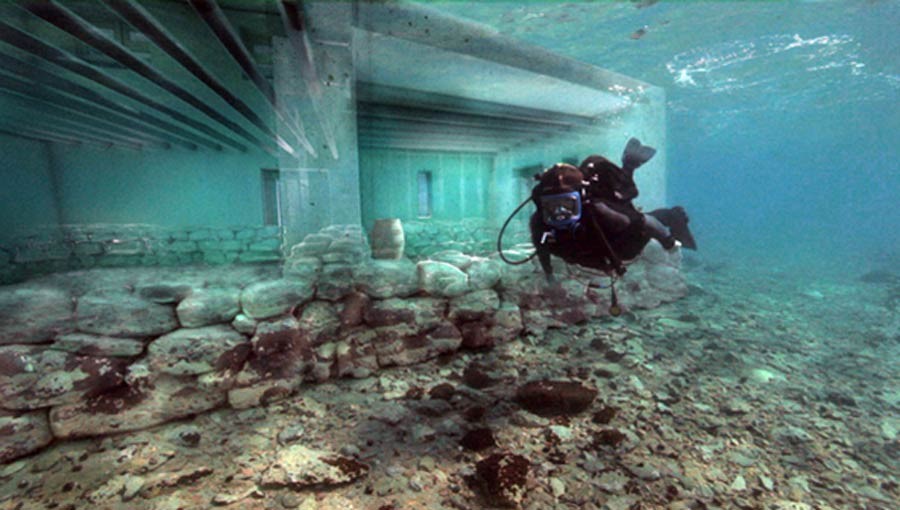 |
| Photo: Ancient Origins |
Discovered in 1967 by Nicholas Flemming and mapped in 1968 by a team of archaeologists from Cambridge, Pavlopetri (Παυλοπέτρι) is located between the islet of Pavlopetri and the Pounta coast of Laconia on the Peloponnese peninsula. Pavlopetri, which literally translates to ”Paul’s Stone,” is one of the oldest submerged cities, as well as the oldest in the Mediterranean sea.
The settlement contains both Neolithic and Bronze Age material and the town is believed to have flourished in the period between 3000 and 1000 years BC.
“There is now no doubt that this is the oldest submerged town in the world,” Dr Jon Henderson, associate professor of underwater archaeology at the University of Nottingham said in 2009.
“It has remains dating from 2800 to 1200 BC, long before the glory days of classical Greece. There are older sunken sites in the world but none can be considered to be planned towns such as this, which is why it is unique.”
Marine geologists have yet to work out why the settlement sank. Theories include sea level changes, ground subsidence as the result of earthquakes, or a tsunami.
“It is very likely a combination of the first two,” Dimitris Sakellariou, at the Greek Institute of Oceanography said.
“As the world’s oldest submerged city it is truly amazing. It not only shows how people lived at the time is also of great interest to natural scientists because the waters around it are so shallow.”
Aided by digital technology archaeologists discovered a world of buildings, courtyards, main streets, rock-cut tombs and religious structures.
It is also believed that the town was the centre of a thriving textile industry (from the many loom weights found in the site).
The underwater ruins of Pavlopetri are an example of underwater cultural heritage that could benefit from the protection of the 2001 UNESCO Convention on the Protection of the Underwater Cultural Heritage.
 | Interesting Tales: 5 Luxurious Hotels That Were Once Prisons Prisons are dreadful places, and some of old prison buildings were renovated and made into luxurious and famous hotels in the world. |
 | Coffee Addict: Difference Types of Italian Cofee Drinks That You Should Try Coffee is a global beverage, and many famous coffee, such as Cappuccino or Macchiato, were originated from Italy. Here is 8 different type of coffee ... |
 | 12 Russian Dishes You Should Try Once Whilst modern Russia is seeing their classic plates reinvented, there are still traditional Russian dishes you simply must try. |
Recommended
 Travel
Travel
Vietnam Through Australian Eyes: Land of Flavor, Warmth, and Timeless Charm
 Travel
Travel
Strategies for Sustainable Growth of Vietnam’s Tourism from International Markets
 Travel
Travel
Vietnam Strengthens Its Presence On The Global Tourism Map
 Multimedia
Multimedia
Phong Nha-Ke Bang National Park Named Top Adventure Travel Site
 Travel
Travel
Vietnam Welcomes Record-High Number of International Visitors
 Travel
Travel
Luxury Train From Hanoi To Hai Phong To Be Launched In May
 Travel
Travel
Phong Nha Named Top Budget-Friendly Travel Destination for Spring 2025: Agoda
 Travel
Travel


